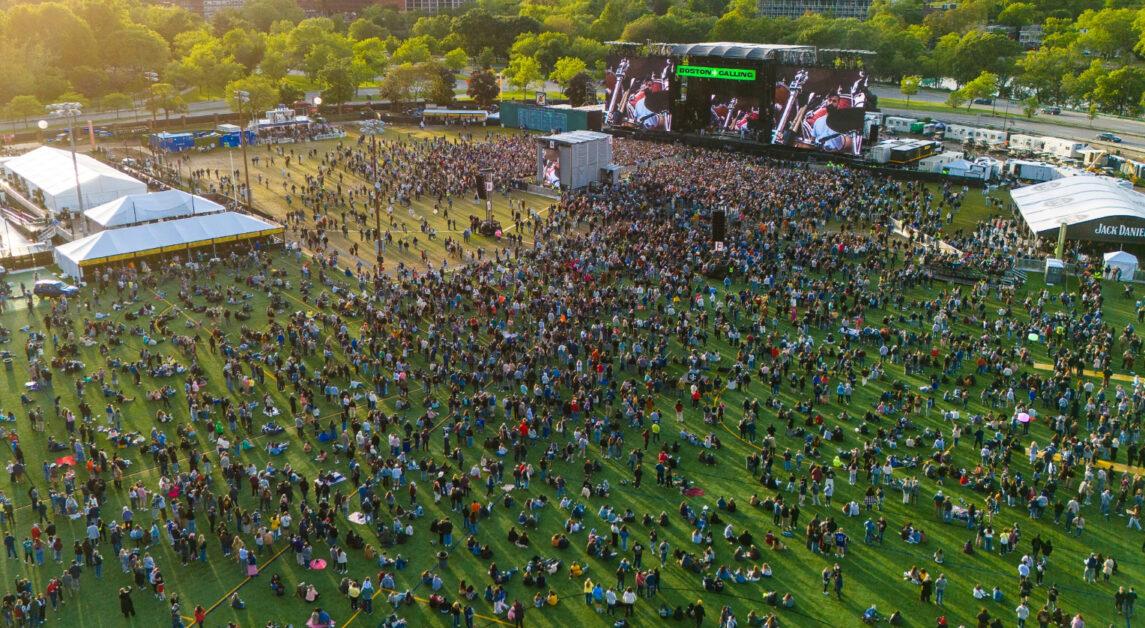This winter, Downtown Boston installed 16 art installations around the Business Improvement District. Inspired and supported by several arts organizations from Quebec, the installations borrowed from the Canadian tradition of winter festivals that offer a sense of community and culture amid a frozen winter.
Being from the frozen state of Minnesota, I understand Boston’s attempt to encourage light and activity in the cold and depressing months that begin the new year. Still, I think Winteractive serves as a disorganized and ineffective initiative that missed its intended mark.
I started my journey to Boston Common on Hammond Street, just outside McElroy Commons, heading toward the Chestnut Hill T stop. After a relatively brief ride, I disembarked the T on Park Street, which was my first mistake.
In order to avoid retracing your steps to see the more northern exhibits, like I eventually did, I’d recommend getting off the T at the Boylston station and walking north on Washington Street, so you can pop by the exhibition titled “Bird House,” if you’d like to see a small red birdhouse affixed to a street lamp. This artwork was whimsical, but I didn’t feel that I had justified the $2.40 T ride quite yet.
Continuing north, there are a smattering of untitled works by an artist named Mark Jenkins. The pieces consisted of various mannequins, faceless human figures and clothing articles hung in strange and fascinating ways.
I came across the first of these installations while pursuing a small and sweet looking bookstore called Brattle Book Shop. Imagine my surprise when I pulled out my map of the exhibits and realized the clothesline above my head was in fact not real, and included a pair of pants hanging on the wire accompanied by both legs and feet. It was delightful, and with my optimism still intact at this point, I appreciated the fact that while sifting through piles of secondhand books, I could pause for a minute and contemplate the artwork I hadn’t initially noticed.
In addition to the first “Untitled” work, four other untitled pieces were located nearby. While they added an element of surprise in an otherwise urban landscape, the figures felt disturbing at times. The faceless figures either hung limply, with stringy hair covering their features, or upside down, sticking to the brick walls of downtown Boston with Spiderman-like strength.
Mathieu Valade’s piece titled Myth and Evidence was also somewhat off-putting. The large white box containing the semblance of a unicorn’s silhouette was intriguing, sure, but frankly sad. To see a favorite childhood animal all boxed up like that made me upset, but I kept trudging along, hoping to find something that could brighten my mood.
That’s when I came upon the clowns. Instead of a childhood favorite, a childhood fear stared down at little old me from across Washington Street. Nope! No thanks, I’ll pass.
I walked up to Summer Street next to see three installations, one being the “Photo Frame”—a photo opportunity to promote the Winteractive event. The other two exhibitions were a row of interactive bicycles and a mural of two deer kissing. After taking in these sights, I decided I needed to pick up coffee at Caffè Nero to collect my thoughts and reflect on the experience so far.
I knew I was only part way through the exhibitions, but my expectations were already let down. Not only was I overwhelmed by this touristy and urban area of Boston, but the art looked better in pictures than in person. Unlike the Freedom Trail, the installations were placed in a random order that had me running in circles around Boston’s uninviting streets. So, tired but determined, I finished my coffee and headed to one of the installations I had been looking forward to the most—the steel whale.
The steel whale takes up just about the size of a small school bus in the intersection of Franklin and Washington Street. Red and yellow lights illuminate and color its skeleton, with the intention of reminding onlookers of the earth’s flora and fauna. On the Winteractive website, I appreciated reading the artist’s statement on this installation, as well as comments on the installation called Territories 2.0 that challenged the viewer to think deeply about topics like climate change.
I began to realize I liked the idea of someone walking down the street, but still taking a moment out of their day to study and appreciate the steel whale. A sense of genuine curiosity is evoked in a normal public setting when they see something like a giant whale or faceless person on a swing.
The installations still have meaning that, while they may be disturbing, can make an impact on anyone who may unintentionally run into the artwork. Sometimes art can be even more meaningful when you aren’t actively seeking it out.
While the Winteractive exhibits offer free, accessible, and thought-provoking art in a casually appealing way, I must admit that I don’t think Winteractive is worth a special trip to the Boston Common. I can appreciate the very northern sentiment of engaging in a communal activity that brightens the cold and dark winter months, but this exhibit was too disorganized and underwhelming to accomplish what it intended.



















